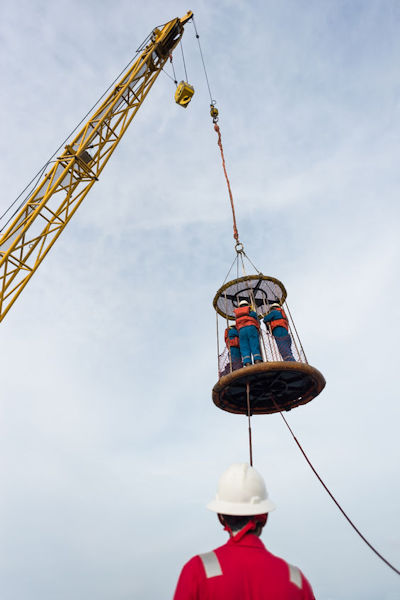Crane Assisted Personnel Transfers
- Before any attempt is made to lift workers with a carrier, give clear instructions to all persons involved.
- Do not transport workers suffering from acute seasickness or vertigo.
- Any person may refuse transfer by a workers basket.
- Persons riding on a worker carrier should wear an approved Type I Personal Floatation Device (PFD) for all transfers.
- Personnel riding on a workers carrier should stand on the outer rim, evenly spaced, and adjacent to a sidewall opening in the netting, facing inward. Passengers interlock forearms to the inside of the sidewall netting.
- If crane operator's view of the primary signalman is obstructed, the workers carrier should not be moved until alternative communication or signal devices are placed in service.
- A designated primary landing zone should be marked in a safe area as determined by a JSA.
- Lift the worker carrier only high enough to clear obstructions and gently lower it to the deck.
- Do not raise or lower a loaded worker carrier directly over a vessel.
- The crane operator may refuse to lift any person who does not comply with the operator's instructions.
- An experienced escort should attend to persons who are not confident performing a workers carrier transfer.
- Injured, ill, or unconfident persons may ride in a sitting position.
Knowledge Check Choose the best answer for the question.
4-6. What should persons wear when riding on a worker carrier during personnel transfers?
You forgot to answer the question!

